Why a Clean Worksite Matters in Drywall Work
/in Drywall, Drywall Contractor, Drywall Installation, Drywall Repair/by Sandra ChristiePro Tips for Dealing with Drywall Mold Removal
/in Drywall, Drywall Expert, Drywall Mold, Drywall Mold Removal/by Byron AbarcaThe Importance of Proper Drywall Installation in Moisture-Prone Areas
/in Drywall, Drywall Installation, Drywall Installer/by Byron AbarcaTransforming Untapped Potential into Usable Space
/in Basement Remodel, Contractor, Drywall, Drywall Installation, Finished Basement/by Byron AbarcaHow Your Drywall Contractor Should Handle the Sanding Process
/in Contractor, Drywall, Drywall Contractor/by Byron AbarcaThe Advantages of Hiring a Drywall Subcontractor
/in Drywall, Drywall Subcontractor, Subcontractor/by Byron AbarcaExploring Kitchen Remodels: Finding the Ideal Fit for Your Home
/in Drywall, Drywall Contractors/by Byron AbarcaMastering Home Improvement: Insider Tips from a Drywall Contractor
/in Contractors, Drywall, Drywall Contractors, Home Improvement/by Byron AbarcaIn our work as drywall contractors, we have had the privilege of witnessing countless home improvement projects unfold. From minor repairs to full-scale renovations, The Drywall Specialist has seen it all. Through those experiences, we’ve gathered valuable insights and tips that can help homeowners navigate their own home improvement endeavors more effectively. In this article, we share some expert advice from the perspective of a drywall contractor, covering everything from preparation to finishing touches.
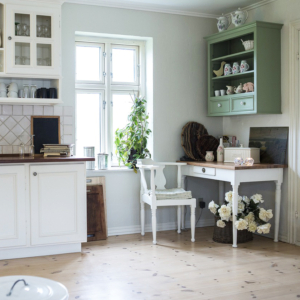
Prepare Ahead for Success
Before diving into any home improvement project, proper preparation is key. As drywall contractors, we can’t stress this enough. Start by clearing the workspace of any furniture or belongings to allow for unrestricted access. Cover floors and furnishings with protective materials to prevent damage from dust and debris. Additionally, take a little time to inspect existing drywall for any signs of damage or moisture issues that may need addressing before proceeding with your project.
Master the Art of Drywall Installation
When it comes to drywall installation, precision is paramount. Measure twice, cut once—this age-old adage holds true in the world of drywall. Take care to accurately measure at least twice, and cut each piece of drywall precisely to ensure a seamless fit. Use the appropriate tools, such as a utility knife and drywall saw, to achieve clean and precise cuts. And be sure to properly secure the drywall to the framing using screws or nails, ensuring a sturdy and durable finished product.
Tackle Common Drywall Repairs
From minor dings and dents to larger holes and cracks, drywall repairs come in all shapes and sizes. As seasoned drywall contractors, we’ve encountered our fair share of repair projects. For smaller blemishes, such as nail holes or surface scratches, a lightweight spackling compound is often sufficient for filling and smoothing the area. For larger repairs, such as holes caused by impact or water damage, consider using a self-adhesive drywall patch. Always consider hiring a professional for more complex repairs.
Achieve a Flawless Finish
The finishing touches can make all the difference in the appearance of your drywall. Take the time to properly sand down any rough edges or uneven surfaces to achieve a smooth and uniform finish. Your sandpaper should have the proper grit for the job. A seasoned professional at a good hardware store will be able to guide you with this, or you can find a grit guide online. Be sure to apply multiple coats of joint compound, allowing ample drying time between coats, to build up a seamless surface. And don’t skimp on the sanding—meticulous sanding between each coat is essential for achieving a professional-quality finish that will stand the test of time.
Embrace Creativity with Texture and Paint
Once the drywall is installed and finished to perfection, it’s time to add the finishing touches with texture and paint. Whether you prefer a smooth, sleek look or a textured finish with depth and character, the possibilities are endless. Experiment with different textures, such as orange peel or knockdown, to add visual interest to your walls.
When it comes to paint, this is your time to get creative with colors and finishes to personalize your space and truly make it your own. It is very rewarding as drywall contractors to see the work that we do come to life with final touches like paint and décor.
Home improvement is both an art and a science. By following expert tips and guidance, you can tackle your next project with confidence and achieve professional-quality results to be proud of. Whether you’re installing new drywall, making repairs, or adding finishing touches, remember to take your time, pay attention to detail, and enjoy the process of transforming your space.
The Role of Drywall Contractors in Home Improvement Projects
/in Contractors, Drywall, Drywall Contractors/by Byron AbarcaHome improvement projects can be an exciting endeavor for homeowners looking to enhance the aesthetics, functionality, and value of their properties. Whether it’s tackling a single room or taking on a full-scale renovation, one key aspect is that of drywall installation and repair.
The right drywall contractor will play a pivotal role in transforming a space, ensuring flawless walls and ceilings that serve as the canvas for renovated living spaces. This article highlights important factors around hiring a professional drywall contractor as part of your home improvement process.
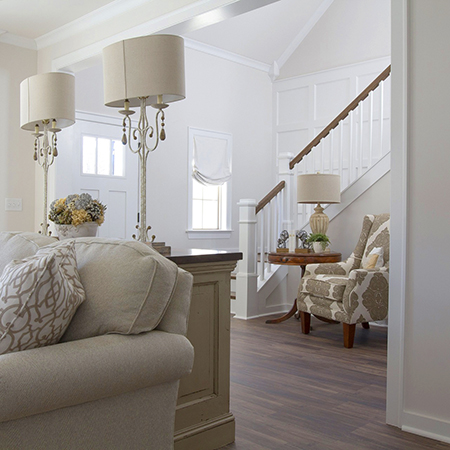
The Importance of Drywall
Drywall, also known as gypsum board or plasterboard, serves as the foundational building material for interior walls and ceilings in residential and commercial construction. Its versatility, affordability, and ease of installation make it a must for homeowners and builders alike. Drywall not only provides a smooth surface for painting and decorating but contributes to insulation and soundproofing within the home as well.
The Role of Drywall Contractors
Expertise and Skill
Drywall installation and repair require precision and skill to achieve seamless finishes. Professional drywall contractors possess the expertise to handle all aspects of the job, including measuring, cutting, hanging, taping, mudding, and sanding. Their attention to detail ensures walls and ceilings are free from imperfections such as cracks, holes, or uneven surfaces – resulting in smooth, unblemished surfaces.
Time and Efficiency
Since home improvement projects often involve tight timelines, hiring a seasoned drywall contractor can expedite the process. With experience and specialized tools, a good, qualified contractor will complete the job efficiently, saving you a great deal of time and hassle. Whether you’re renovating a single room or an entire house, a skilled drywall contractor ensures timely project completion without compromising quality.
Quality Materials and Techniques
A seasoned drywall contractor employs high-quality materials and proven techniques to deliver superior results. The right drywall contractor also prioritizes craftsmanship and durability, from selecting the right type and thickness of drywall to applying the appropriate joint compound and finishing techniques. Using premium materials and best industry practices ensures that your walls and ceilings withstand the test of time.
Customization and Design
Beyond basic installation and repair, a highly skilled drywall contractor can also assist in customizing your living space to meet your specific design preferences. Whether you desire textured finishes, curved walls, or intricate details, experienced contractors can bring your ideas to life. Their ability to interpret blueprints, collaborate with designers, and execute intricate designs increases their value even more.
Choosing the Right Drywall Contractor
When selecting a drywall contractor for your home improvement project, consider the following factors:
- Experience and Reputation: Look for contractors with a proven track record of excellence and positive customer feedback.
- Licensing and Insurance: Ensure that the contractor is licensed, bonded, and insured to protect yourself and your property.
- Portfolio and References: Review the contractor’s portfolio of past projects and request references to gauge their work quality.
- Communication and Transparency: Choose a contractor who communicates effectively, provides detailed estimates, and keeps you informed throughout the project.
- Pricing and Value: While cost is always a consideration, prioritize value over low bids, as quality craftsmanship is worth the peace of mind it brings.
In the realm of home improvement, the expertise of a qualified professional drywall contractor is indispensable. From flawless finishes to customized designs, drywall professionals play a determining role in enhancing the aesthetic appeal and functionality of your living space. Entrusting your drywall installation and repair needs to the right skilled contractor will ensure you start your home improvement journey on the right footing.
The Appeal of Open-Concept Kitchens
/in Drywall, Drywall Installation, Open-Concept Kitchen/by Byron Abarca Closed-off living spaces are slowly disappearing as the open-concept kitchen rises in popularity. This design trend not only fosters connection and maximizes space but also offers endless design possibilities when coupled with expert drywall installation techniques. Here are several compelling reasons to delve into the world of open living, whether you plan to renovate an existing kitchen or build a new home.
Closed-off living spaces are slowly disappearing as the open-concept kitchen rises in popularity. This design trend not only fosters connection and maximizes space but also offers endless design possibilities when coupled with expert drywall installation techniques. Here are several compelling reasons to delve into the world of open living, whether you plan to renovate an existing kitchen or build a new home.
Embracing Connection
The biggest allure of an open-concept kitchen lies in its ability to foster connection and togetherness. By eliminating walls and barriers, the kitchen seamlessly integrates with adjoining living and dining areas, promoting interaction between family members and guests. With the expertise of an experienced drywall installer, the transition between spaces creates a cohesive environment that ultimately enhances the flow of conversation and activity.
Enhancing Kitchen Workflow
The installation of drywall plays a big but silent role in optimizing the functionality of an open-concept kitchen. Properly installed drywall provides a smooth, durable surface that facilitates efficient kitchen workflow. Whether preparing meals, supervising children, or entertaining guests, the absence of obstructive walls ensures a fluid and organized space where tasks can be accomplished with ease.
Expanding Space and Light
An open-concept kitchen, coupled with seamless drywall installation, creates an air of spaciousness, making even modest areas feel larger and more inviting. With no walls to obstruct, natural light fills the space, creating an airy ambiance. When walls are taken down, expertly installed drywall patching and repairing ensures a seamless finish that enhances the overall aesthetic while maximizing light, uplifting the mood of the entire home.
Improving Entertaining
Hosting gatherings and entertaining is transformed with an open kitchen. The absence of walls allows the cook to interact with guests while preparing meals, removing barriers between host and party. With the right drywall installation providing a polished backdrop, a fluid layout facilitates easy movement between the kitchen, dining, and living areas, creating a warm and inclusive atmosphere.
Balancing Privacy and Openness
While openness is a hallmark of open concept, it’s essential to strike a balance between openness and privacy. This is achieved through advanced drywall installation techniques. Strategic design elements such as partial walls, half-height partitions, or well-placed furniture can delineate zones while preserving the overall open feel. With drywall serving as the foundation, these features define spaces and provide a sense of intimacy without compromising the benefits of an open layout.
Achieving Flexible Design
The beauty of the open-concept kitchen is further enhanced by design versatility. Homeowners enjoy the freedom to tailor a space to their tastes and requirements – whether they prefer a modern, sleek look or a rustic, cozy feel. With intact drywall providing a uniform canvas, cohesive color schemes and materials can be smartly integrated, creating a space that reflects the homeowner’s style and personality while bridging the gap between two rooms.
Supporting Multi-Functional Spaces
Open living encourages multi-functional spaces, adapting to the diverse needs of modern lifestyles. The kitchen can serve as a workspace, homework area, or even a cozy reading nook with the right drywall installation. The flexibility of the open concept, combined with skilled drywall techniques, allows homeowners to design and rearrange the space according to their evolving needs, maximizing functionality and versatility.
Blending Design and Functionality Through Expert Drywall Installation
The open-concept kitchen offers a harmonious blend of connectivity, function, and style, which is why it continues to attract homeowners and designers alike. With careful planning and guidance from drywall professionals, you can achieve a kitchen you’ll love for years to come.
Innovative Drywall Design Ideas to Elevate Interior Spaces
/in Drywall, Drywall Design, Drywall Installation, Home Renovation, Interior Design/by Byron Abarca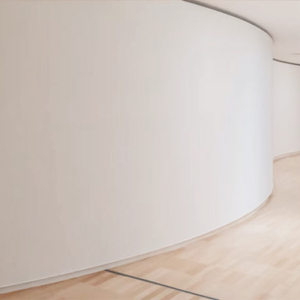
In the realm of home renovation and interior design, drywall is often considered a fundamental element, serving as the blank canvas for a homeowner’s vision. But drywall can be much more than just a functional component. It can also serve as a versatile and dynamic medium for creative expression. Here are some drywall design ideas that elevate and add sophistication to interior spaces.
Recessed Niches
An innovative way to incorporate drywall into your interior design scheme, these built-in alcoves provide stylish and functional display areas for showcasing artwork, collectibles, or decorative objects. Recessed niches can be seamlessly integrated into walls, creating a custom-finished look that maximizes available space while adding depth and dimension to a room.
During the drywall installation process, precise measurements must be taken to ensure that recessed niches are properly aligned and proportioned. Careful attention should also be paid to lighting and finishing details to enhance the visibility and visual impact of displayed items.
Decorative Paneling
Drywall paneling offers endless possibilities for adding texture, pattern, and visual interest to interior walls. Whether through the use of raised panels, geometric shapes, or intricate designs, decorative paneling can transform ordinary walls into works of art. From modern and minimalist to ornate and traditional, there are countless styles and patterns to choose from, allowing homeowners to personalize their spaces to suit their tastes and preferences.
Drywall paneling can be installed as individual panels or as seamless, continuous surfaces, depending on the desired aesthetic and architectural requirements. Skilled drywall contractors can create custom paneling designs that complement the overall design scheme of the home, enhancing its visual appeal and character.
Curved Walls
Traditional walls are typically flat and rectangular, but with modern advancements in drywall installation techniques, curved walls have become increasingly popular. While not appropriate for every home, curved walls can add a sense of fluidity and movement to a space, breaking up monotony and creating visual interest. Whether gently arcing around a corner, curling around a spiral staircase, or sweeping gracefully across a room, curved walls can impart elegance to any interior.
To achieve curved walls, specialized framing techniques and flexible drywall materials are utilized during the installation process. Experienced drywall contractors can expertly shape and mold the drywall to conform to the desired curvature, resulting in seamless and visually stunning results.
Textured Finishes
Texture is a powerful design element that can add depth, dimension, and tactile interest to interior walls. Drywall texture techniques, such as skip trowel, knockdown, or orange peel, can create a variety of effects ranging from subtle and understated to bold and dramatic. These Texture techniques can be applied to entire walls or used selectively to accentuate architectural features or focal points within a room.
In addition to traditional drywall texture methods, innovative techniques such as 3D printing and sculptural molding are emerging as exciting options for creating unique and customizable wall textures. These cutting-edge approaches allow homeowners to experiment with new forms and materials, pushing the boundaries of conventional drywall design.
Integrated Lighting
Often called the “jewelry” of a finished space, lighting plays a key role in interior design. Drywall offers a versatile platform for integrating lighting fixtures into architectural elements of a space. Recessed lighting, cove lighting, and LED strips can be incorporated directly into drywall ceilings, walls, and niches, providing both ambient illumination and accent lighting for highlighting artwork, architectural details, or decorative features.
To make this happen, provisions must be made for electrical wiring and fixture mounting during the drywall installation process. Pre-planning is essential to ensure proper placement and coordination of lighting fixtures. This will ensure that lighting elements are seamlessly integrated into finished walls to achieve the desired ambiance and visual impact within the space.
Drywall is much more than just a basic building material; it is a canvas for creativity in interior design. Drywall design ideas such as curved walls, recessed niches, decorative paneling, textured finishes, and integrated lighting, can elevate interior spaces to new heights of style and sophistication. Whether undertaking a major home renovation or simply looking to refresh a room, the possibilities for creative expression with drywall abound.
Getting Started on Home Improvement Projects
/in Drywall/by Byron Abarca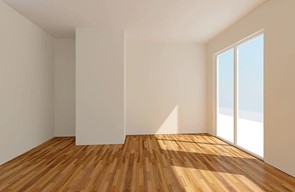 Do you have multiple home improvement projects in mind, but don’t know where to start? Spring is the perfect time to freshen your surroundings. But sometimes the hardest part is getting your ideas into focus.
Do you have multiple home improvement projects in mind, but don’t know where to start? Spring is the perfect time to freshen your surroundings. But sometimes the hardest part is getting your ideas into focus.
Perhaps a long-awaited tax refund will provide you with the opportunity to make those updates now. Or maybe your changes are just long overdue.
Here are a few tips to getting started:
- Make a random list of projects that you would like to have done. Basically, a brainstorming session that goes room-by-room in your home or office. This allows you to think about areas that you might initially cast aside because they seem too expensive or time-consuming. You don’t have to have a well thought-out plan during brainstorming. Sometimes the best plans emerge from those random types of thoughts. For example, you secretly wish that you could add a workout room in your basement but have always thought it would be too costly. Or perhaps you simply can’t imagine moving all the stuff in the basement to actually make it happen. Write it down anyway. You can narrow down the list later.
- Determine a preliminary budget. If you have a tax refund headed your way, the extra cash flow might allow for multiple home improvements and make it easy to set your spending limit. Otherwise, your preliminary budget may likely fluctuate once you start receiving quotes. Don’t let this stop you from getting started. Your original plans to create usable attic space, refinish your basement, and add a hobby room all at the same time may not be realistic. It’s ok. Do the projects in phases by setting a long term home improvement budget plan. This also gives you fun ideas to look forward to.
- Contact a reputable contractor for quotes and design options. This can be an overwhelming task as there are so many contractors available. Internet searches may assist by providing you with a nice long list, but choosing one with extensive experience and knowledge is of utmost importance. In addition, referrals from friends and family may prove to be the most valuable resources in your search. Your potential contractor should be able to provide documentation showing their valid, current license to do work in the state they are operating a business in, as well as their work insurance information. (The Drywall Specialist – Licensed #HIC 0659945 – Fully Insured)
- Schedule a time for your potential contractor to evaluate the project at hand and provide a written estimate for the work involved. The contractor should be willing to travel to see the project at no cost to you. They should also be able to follow up with a written estimate showing the full scope of work involved.
- Ask for input from your potential contractor. This is their field of expertise and it is the right time to understand their full scope of experience. Also, this may be the perfect time to refer to your brainstorming list with your contractor. Sometimes a fresh set of eyes and creativity can help with even better ideas.
- Be specific in your requests but definitely ask questions while the contractor is on-site. This will save valuable communication time if your project is urgent.
- Ask the contractor their preferred method of communication. And let them know your preferred method. This will also save valuable time if you have additional questions after they leave.
Once you have some quotes in hand, you’re past the point of getting started! Now you’ll be one step closer to enjoying the home improvement project you’ve dreamed about.
How to Hire a Drywall Contractor
/in Drywall/by Byron Abarca Are you considering hiring a drywall contractor for a home improvement or home repair project? If you have ever previously hired a home improvement contractor, you already know that the task can be daunting. If you feel overwhelmed about finding the right drywall contractor, here are some best practices to help you make an educated choice.
Are you considering hiring a drywall contractor for a home improvement or home repair project? If you have ever previously hired a home improvement contractor, you already know that the task can be daunting. If you feel overwhelmed about finding the right drywall contractor, here are some best practices to help you make an educated choice.
Ask the Drywall Contractor for an Estimate
Schedule a time for your potential drywall contractor to evaluate the project at hand and provide a written estimate for the work involved. The drywall contractor should be willing to travel to see the project at no cost to you. They should also be able to follow up with a written estimate showing the full scope of work involved.
Inquire About Drywall Skill Level and Experience
In addition to the amount of time the contractor has worked in the drywall trade, your potential contractor should have extensive experience in most or all of the following areas of drywall expertise:
Framing
Drywall Hanging
Drywall Taping
Sanding
Dust Removal
Water Damage Repair
Interior Trim Installations
Don’t hesitate to ask your potential drywall contractor about each of these areas of service. This information will help to give you a good idea of their range of experience in the trade. If they have worked in the drywall trade long enough, they will likely have experience in each of the scopes outlined above.
Ask For References
Most drywall contractors with significant experience will be able to provide the names and contact information of a few customers they have worked with in the past who can vouch for their workmanship, timeliness, cleanliness and ability to deliver finished projects within established timelines.
Consider contacting at least two previous customers and ask detailed questions about the projects the drywall contractor worked on. Each customer should be willing to share their experience with the contractor. Talking to references who can verify the drywall professional’s expertise will go a long way toward easing any uncertainty about the potential drywall hire.
Request Licensing and Insurance Credentials
Your potential drywall contractor should be able to provide documentation showing their valid, current license to do work in the state they are operating a business in, as well as their work insurance information. Don’t hesitate to ask for this documentation. Once provided, keep it in a safe place for reference. With a good drywall contractor, you will likely not need to access the documentation. But it does provide added assurance.
Ask for a Written Contract
Once you have followed all the actions above, you are ready to hire. Request a contract from your drywall contractor that outlines the full scope of work to be provided, as well as the cost agreed upon. Having a written contract will help to provide peace of mind during the project.
Remember that the contract must be signed by both parties — you and your drywall contractor – in order to be valid. A copy showing the signatures of both parties should be provided to you prior to the commencement of work.
Let the Drywall Work Commence
You have done your due diligence and you feel confident you have selected a good, qualified drywall contractor. You are now ready to put the project in the hands your chosen drywall professional and see it to fruition, with added assurance that you have properly vetted your drywall hire. Good work.
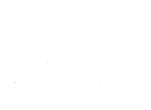
The Highest Quality Drywall Installation Services for Your Home or Business
Call Today: (860) 339-6975
Providing drywall and all related services to New Haven, Middlesex, and New London Counties and commercial customers in Connecticut statewide
© Copyright 2025 The Drywall Specialist, All Rights reserved | Licensed #HIC 0659945 | Fully Insured
